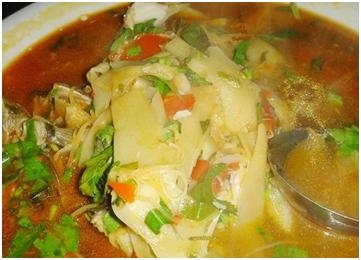代做3 D printer materials estimation編程
時(shí)間:2024-02-21 來(lái)源: 作者: 我要糾錯(cuò)
Project 1: 3D printer materials estimation
Use the template material in the zip file project01.zip in Learn to write your report. Add all your function
definitions on the code.R file and write your report using report.Rmd. You must upload the following three
files as part of this assignment: code.R, report.html, report.Rmd. Specific instructions for these files are
in the README.md file.
The main text in your report should be a coherent presentation of theory and discussion of methods and
results, showing code for code chunks that perform computations and analysis but not code for code chunks
that generate functions, figures, or tables.
Use the echo=TRUE and echo=FALSE to control what code is visible.
The styler package addin is useful for restyling code for better and consistent readability. It works for both
.R and .Rmd files.
The Project01Hints file contains some useful tips, and the CWmarking file contains guidelines. Both are
attached in Learn as PDF files.
Submission should be done through Gradescope.
1 The data
A 3D printer uses rolls of filament that get heated and squeezed through a moving nozzle, gradually building
objects. The objects are first designed in a CAD program (Computer Aided Design) that also estimates how
much material will be required to print the object.
The data file "filament1.rda" contains information about one 3D-printed object per row. The columns are
• Index: an observation index
• Date: printing dates
• Material: the printing material, identified by its colour
• CAD_Weight: the object weight (in grams) that the CAD software calculated
• Actual_Weight: the actual weight of the object (in grams) after printing
Start by loading the data and plotting it. Comment on the variability of the data for different CAD_Weight
and Material.
2 Classical estimation
Consider two linear models, named A and B, for capturing the relationship between CAD_Weight and
Actual_Weight. We denote the CAD_weight for observation i by xi
, and the corresponding Actual_Weight
by yi
. The two models are defined by
• Model A: yi ∼ Normal[β1 + β2xi
, exp(β3 + β4xi)]
• Model B: yi ∼ Normal[β1 + β2xi
, exp(β3) + exp(β4)x
2
i
)]
The printer operator reasons that random fluctuations in the material properties (such as the density) and
room temperature should lead to a relative error instead of an additive error, leading them to model B as an
approximation of that. The basic physics assumption is that the error in the CAD software calculation of
the weight is proportional to the weight itself. Model A on the other hand is slightly more mathematically
convenient, but has no such motivation in physics.
1
Create a function neg_log_like() that takes arguments beta (model parameters), data (a data.frame
containing the required variables), and model (either A or B) and returns the negated log-likelihood for the
specified model.
Create a function filament1_estimate() that uses the R built in function optim() and neg_log_like()
to estimate the two models A and B using the filament1 data. As initial values for (β1, β2, β3, β4) in the
optimization use (-0.1, 1.07, -2, 0.05) for model A and (-0.15, 1.07, -13.5, -6.5) for model B. The inputs of the
function should be: a data.frame with the same variables as the filament1 data set (columns CAD_Weight
and Actual_Weight) and the model choice (either A or B). As the output, your function should return the
best set of parameters found and the estimate of the Hessian at the solution found.
First, use filament1_estimate() to estimate models A and B using the filament1 data:
• fit_A = filament1_estimate(filament1, “A”)
• fit_B = filament1_estimate(filament1, “B”)
Use the approximation method for large n and the outputs from filament1_estimate() to construct an
approximate 90% confidence intervals for β1, β2, β3, and β4 in Models A and B. Print the result as a table
using the knitr::kable function. Compare the confidence intervals for the different parameters and their width.
Comment on the differences to interpret the model estimation results.
3 Bayesian estimation
Now consider a Bayesian model for describing the actual weight (yi) based on the CAD weight (xi) for
observation i:
yi ∼ Normal[β1 + β2xi
, β3 + β4x
2
i
)].
To ensure positivity of the variance, the parameterisation θ = [θ1, θ2, θ3, θ4] = [β1, β2, log(β3), log(β4)] is
introduced, and the printer operator assigns independent prior distributions as follows:
θ1 ∼ Normal(0, γ1),
θ2 ∼ Normal(1, γ2),
θ3 ∼ LogExp(γ3),
θ4 ∼ LogExp(γ4),
where LogExp(a) denotes the logarithm of an exponentially distributed random variable with rate parameter
a, as seen in Tutorial 4. The γ = (γ1, γ2, γ3, γ4) values are positive parameters.
3.1 Prior density
With the help of dnorm and the dlogexp function (see the code.R file for documentation), define and
document (in code.R) a function log_prior_density with arguments theta and params, where theta is the
θ parameter vector, and params is the vector of γ parameters. Your function should evaluate the logarithm
of the joint prior density p(θ) for the four θi parameters.
3.2 Observation likelihood
With the help of dnorm, define and document a function log_like, taking arguments theta, x, and y, that
evaluates the observation log-likelihood p(y|θ) for the model defined above.
3.3 Posterior density
Define and document a function log_posterior_density with arguments theta, x, y, and params, which
evaluates the logarithm of the posterior density p(θ|y), apart from some unevaluated normalisation constant.
2
3.4 Posterior mode
Define a function posterior_mode with arguments theta_start, x, y, and params, that uses optim together
with the log_posterior_density and filament data to find the mode µ of the log-posterior-density and
evaluates the Hessian at the mode as well as the inverse of the negated Hessian, S. This function should
return a list with elements mode (the posterior mode location), hessian (the Hessian of the log-density at
the mode), and S (the inverse of the negated Hessian at the mode). See the documentation for optim for how
to do maximisation instead of minimisation.
3.5 Gaussian approximation
Let all γi = 1, i = 1, 2, 3, 4, and use posterior_mode to evaluate the inverse of the negated Hessian at the
mode, in order to obtain a multivariate Normal approximation Normal(µ,S) to the posterior distribution for
θ. Use start values θ = 0.
3.6 Importance sampling function
The aim is to construct a 90% Bayesian credible interval for each βj using importance sampling, similarly to
the method used in lab 4. There, a one dimensional Gaussian approximation of the posterior of a parameter
was used. Here, we will instead use a multivariate Normal approximation as the importance sampling
distribution. The functions rmvnorm and dmvnorm in the mvtnorm package can be used to sample and evaluate
densities.
Define and document a function do_importance taking arguments N (the number of samples to generate),
mu (the mean vector for the importance distribution), and S (the covariance matrix), and other additional
parameters that are needed by the function code.
The function should output a data.frame with five columns, beta1, beta2, beta3, beta4, log_weights,
containing the βi samples and normalised log-importance-weights, so that sum(exp(log_weights)) is 1. Use
the log_sum_exp function (see the code.R file for documentation) to compute the needed normalisation
information.
3.7 Importance sampling
Use your defined functions to compute an importance sample of size N = 10000. With the help of
the stat_ewcdf function defined in code.R, plot the empirical weighted CDFs together with the unweighted CDFs for each parameter and discuss the results. To achieve a simpler ggplot code, you may find
pivot_longer(???, starts_with("beta")) and facet_wrap(vars(name)) useful.
Construct 90% credible intervals for each of the four model parameters based on the importance sample.
In addition to wquantile and pivot_longer, the methods group_by and summarise are helpful. You may
wish to define a function make_CI taking arguments x, weights, and prob (to control the intended coverage
probability), generating a 1-row, 2-column data.frame to help structure the code.
Discuss the results both from the sampling method point of view and the 3D printer application point of
view (this may also involve, e.g., plotting prediction intervals based on point estimates of the parameters,
and plotting the importance log-weights to explain how they depend on the sampled β-values).
請(qǐng)加QQ:99515681 郵箱:99515681@qq.com WX:codehelp
標(biāo)簽:
掃一掃在手機(jī)打開當(dāng)前頁(yè)
注:本網(wǎng)條致力提供真實(shí)有用信息,所轉(zhuǎn)載的內(nèi)容,其版權(quán)均由原作者和資料提供方所擁有!若有任何不適煩請(qǐng)聯(lián)系我們,將會(huì)在24小時(shí)內(nèi)刪除。
無(wú)相關(guān)信息 昆明生活資訊
推薦信息
相關(guān)文章
無(wú)相關(guān)信息
欄目更新















